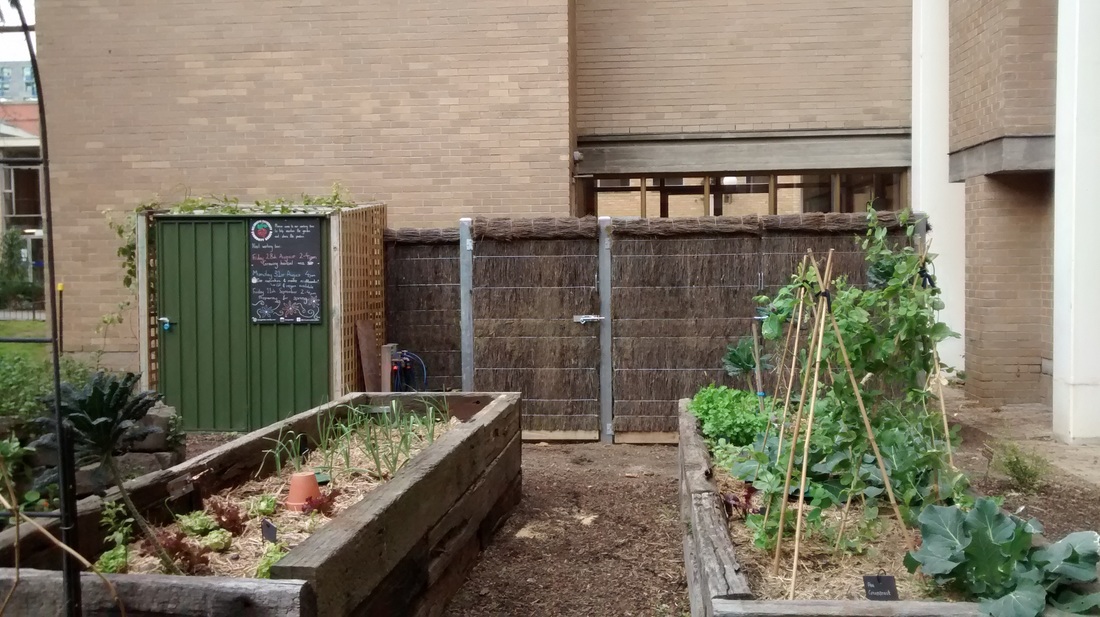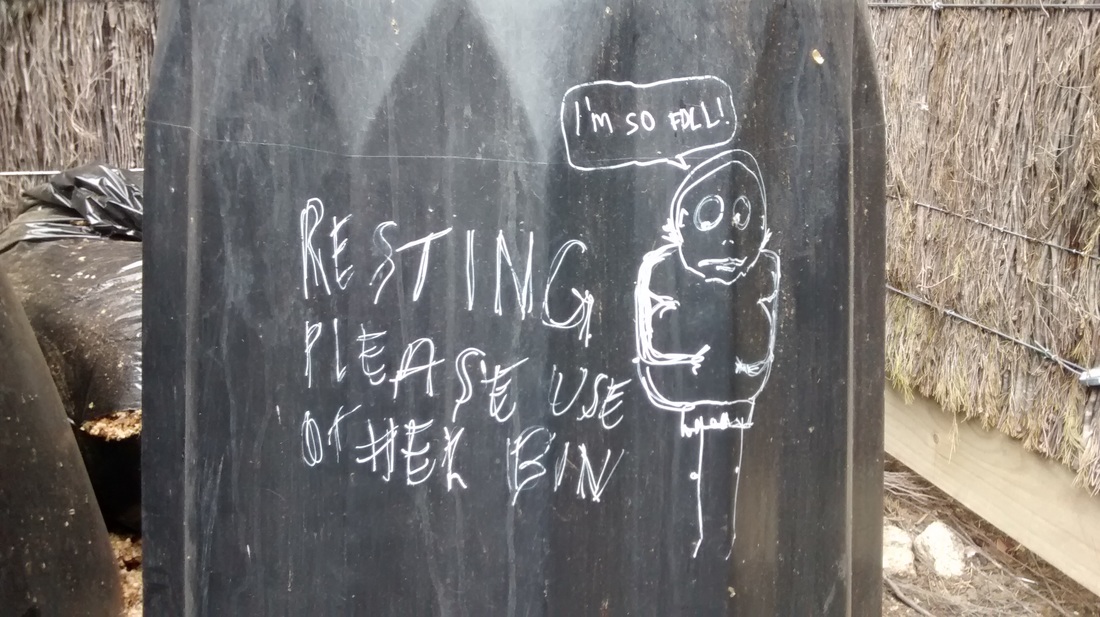|
We process a LOT of compost at the MUC Garden, which is great! It reduces waste, and is key to the health of our garden beds. We have three compost bins as well as a worm farm, and they all receive scraps not only from our garden, but from individuals and many staff kitchens around campus. We are really grateful that people take the time to drop off their scraps, and are thrilled that we can contribute to waste reduction on campus. All of this does require a bit of management though, and this post will cover how we make it happen! The first consideration with composting in a busy urban location like the university is making sure the area looks good, isn't smelly and doesn't attract pests. Until recently, our compost area was temporarily constructed from pallets and lattice, which worked fine but wasn't super aesthetically pleasing. We are therefore very happy that the university recently constructed a new fence for us, seen below! It looks great and hides the unsightly (to most) compost bins - tick and tick! To reduce smell and the likelihood of attracting pests, we only use enclosed compost bins. We try and make sure nothing too smelly ends up in the bins, which we'll get into in a minute! We also have to be very diligent about ensuring that enough carbon rich materials are added to the compost to balance out the large amounts of smelly nitrogen rich materials (i.e. the veggies and fruits). We do this by adding leaves, cardboard and more recently, coffee chaff! See our earlier post for info on how we source our coffee chaff and how awesomely sustainable it is. To ensure our system operates effectively and doesn't smell, it's important that the right things go in the right bins! Signage is key here. We have signs informing people of what is suitable to compost and what is not, e.g. meat is no good as it smells! The worm farm has its own set of instructions, to make sure our little friends don't get smothered in the wrong foods. We also have signs on either side of each compost bin, one for 'fill me' and one for 'resting' (see the illustration below by our creative talent Leila). Once a bin is full, we simply rotate the whole thing around so that the 'resting' sign is facing outwards. Works a treat! Finally, there's no way around it: we have to work at it! As you may have noticed from our previous blogs, every working bee involves turning the compost, either with an aerator or a shovel. The volunteers also periodically drop in during the week to give the compost a quick turn and check if we need to switch to a new bin.
Composting is such a rewarding thing to do, and we're glad we can produce this nutrient rich product right in the middle of our campus. Comments are closed.
|
AuthorsRead all about it: MUC Garden and Burnley Student Association share updates on their activities. Blogs about...
All
|


